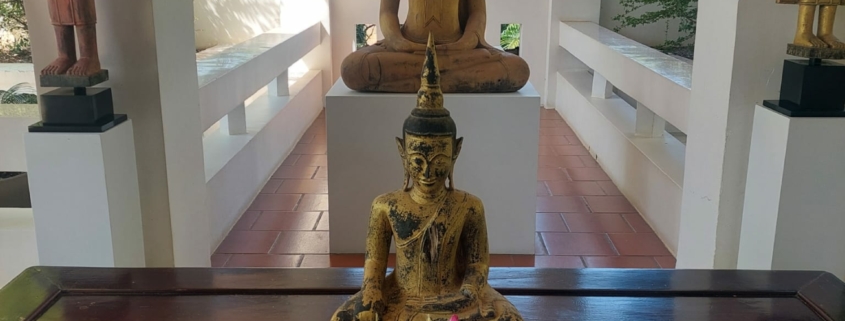Reconciliation and Tolerance: Foundation for Lasting Peace
Executive Conference of Centrist Democrat International (IDC.CDI)
Kheang Un, P.D., Secretary of State, Ministry of Foreign Affairs and International Cooperation, Cambodia
Excellencies, Ladies and Gentlemen,
1. War has haunted mankind since time immemorial, causing destruction and suffering. As we speak, wars are raging in many parts of the world. In some instances, wars were waged believingly to end wars. Unfortunately, peace remained elusive. These conditions are partly because efforts to build and sustain peace were not cultivated in the young.
2. In these brief remarks, I will make three points. First, we need to know how to instill a culture of peace in our youth. Second, we need to promote inclusive and sustainable development for youth. Third, we need to promote cross-cultural understanding among youth.
3. In conflict societies, youth are involved in wars and violence, which, in many cases, are perpetuated in vicious cycles. Youth, therefore, should learn and then share best practices that can effectively end these vicious cycles. I want to share some recent Cambodian history with you—a valuable episode of history that teaches us how these cycles can end. The area we gather in today was—not long ago—a battleground between Khmers and Khmers. International intervention through the United Nations contributed to ending the protracted conflicts in Cambodia, but only partially. It was the vision of Former Prime Minister Samdech Techo Hun Sen that ended the war. His vision is that war cannot be finished by war. Only through negotiation and reconciliation can a lasting peace be achieved. Underpinning Prime Minister Hun Sen’s elegant vision is that negotiation and reconciliation must be anchored on a Win-Win principle that honors former adversaries’ dignity, property, liberty, and status.
4. The Cambodian government instills the values of peace, reconciliation, and tolerance in its youth. The Cambodian government designated May 20th as a day of remembrance of the darkest period of Cambodia’s history, during which the Khmer Rouge destroyed the foundation of the society and killed over 2 million Cambodians. The government constructed stupas in memory of those who had perished. This is a reminder to Cambodian youth that we can forgive the perpetrators, but we should not forget the enormity of the suffering and destruction Cambodia has endured. The government also constructed the Win-Win Monument, inscribing the history of negotiation and reconciliation that led to eventual peace in Cambodia.
5. Throughout history, we learn that our forebearers and our contemporary fellows uttered the burning desire that war should not occur. Yet, it did! In all cases, youth participated in wars; however, they are also victims of wars. The causes of war are many. War originates from scarcity, unequal resource access, and lack of economic opportunities. These factors accumulate, resulting in hopelessness. These are the root causes of conflict. Therefore, the government must promote positive peace by pushing Sustainable Development Goals to reduce poverty, inequality, and environmental degradation. Youth can help alleviate these root causes. For example, the Union of Youth Federation of Cambodia contributes doctors to fight the spread of COVID-19, promotes E-learning, partners with businesses to promote vocational training and employment opportunities, and undertakes systematic land registration.
6. Peace on earth can be achieved only when there is peaceful coexistence among nations. Peaceful coexistence occurs only when the youth of different countries understand each other’s values, priorities, and interests. Lack of such understanding often leads to misperceptions that, in turn, foster mistrust and hatred, which are sources of conflicts. Such
mutual understanding can be promoted by exchanging visits by youth to each other’s countries. These visits should also be accompanied by activities that foster mutual understanding. As we gather here, some forces are attempting to deglobalize. Youth exchanges and related activities will create a counterforce to this deglobalization pulse. With their awareness of the shortcomings of current globalization, the youth will mold globalization into an inclusive and future-focused one.
7. A Khmer proverb says, “Bamboo shoots cherish bamboo.” Similarly, youth cherish humanity. Another Khmer proverb says, “To live is to hope.” In this context, when we have hope in our youth, we will live confidently that our children and grandchildren will inherit our planet and help transform it into a more harmonious one.
8. Thank you for your kind attention.



Trackbacks & Pingbacks
jak získat kamagra online
kanadská diskontní lékárna kamagra
order itraconazole next day
Buy itraconazole online cheap
purchase fildena australia no prescription
fildena without prescription cod
acheter kamagra médicament livraison
kamagra livraison sans ordonnance
get gabapentin generic in us
discount gabapentin uk buy cheap
buy flexeril cyclobenzaprine generic now
no prescription next day delivery flexeril cyclobenzaprine
buy dutasteride generic a canada
cheap dutasteride generic vs brand name
purchase avodart medication interactions
buy cheap avodart uk order
purchase staxyn usa overnight delivery
how to buy staxyn generic efficacy
online xifaxan canada
buy xifaxan generic ireland
online order rifaximin buy safely online
buying rifaximin australia discount
get enclomiphene usa suppliers
discount enclomiphene generic low price
purchase androxal generic australia
buy cheap androxal buy generic
Comments are closed.